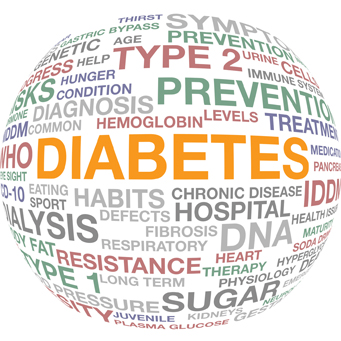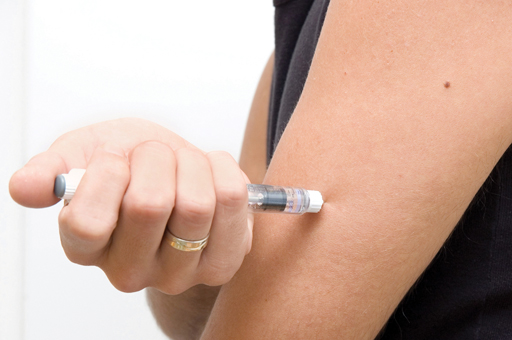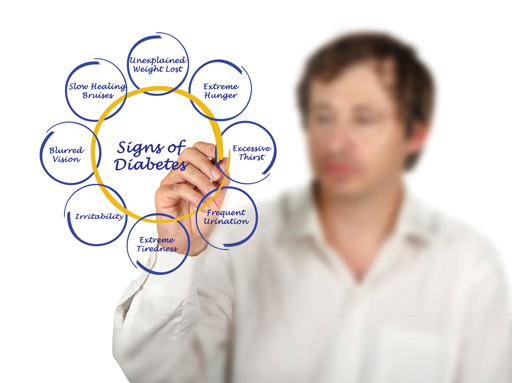What's new in... Diabetes
In Clinical
Follow this topic
Bookmark
Record learning outcomes
With eight different classes of anti-diabetic medicines available in the UK, this article considers the increasingly complex treatment picture in diabetes care.
 In January 1922, clinicians at Toronto’s general hospital injected Leonard Thompson, a 14-year-old who was close to death with severe diabetes, with an extract made from cattle pancreatic glands. Leonard’s blood glucose dropped and his strength and appetite rapidly improved.1,2
In January 1922, clinicians at Toronto’s general hospital injected Leonard Thompson, a 14-year-old who was close to death with severe diabetes, with an extract made from cattle pancreatic glands. Leonard’s blood glucose dropped and his strength and appetite rapidly improved.1,2
Since then, pharmaceutical companies have launched numerous anti-diabetic drugs. Indeed, the choice can be bewildering – to non-specialists at least – particularly as combination therapy is now commonplace in type 2 diabetes.
At first sight, such therapeutic diversity should be good news for the 3.8m people in England aged over 16 years (about 9 per cent of adults) estimated to have diabetes by Public Health England. As we’ll see, new studies suggest that some of the newer agents reduce the risk of complications as well as lowering blood glucose – but is this diversity really needed? And will the newer members of some classes prove to be more than just ‘me-toos’?
Â
Key facts
- Metformin, a derivative introduced in 1959, remains a mainstay of diabetes management
- There are major clinical differences between drugs in the same class
- Management of diabetes is not just about reducing HbA1c as low as possible
Â
By 1923, Eli Lilly had launched insulin commercially in the US.1 Today, the wide variety of insulin analogues – which range from very rapidly acting to ‘ultra-long’ durations of action – helps most people attain near-physiological control of blood glucose.
Stephen Bain, professor of medicine (diabetes) at the Institute of Life Science, Swansea, and clinical director, Diabetes Research Unit Cymru, points out that an insulin might also come in different strengths, such as glargine U100 and U300. And biosimilar insulins (which is what glargine is) are now reaching the market. “The rapid increase in the number of available insulins means that branded rather than generic prescribing should become the norm,†he tells Pharmacy Magazine.
To complicate matters further, insulin analogues are increasingly combined with other anti-diabetics to improve blood glucose control in type 2 diabetes. For example, the DUAL V study, sponsored by Novo Nordisk and presented at the recent European Association for the Study of Diabetes meeting in Munich, found that the once-daily combination of insulin degludec and liraglutide, a long-acting glucagon-like peptide-1 (GLP) receptor agonist, improved glycated haemoglobin (HbA1c), hypoglycaemia risk and weight compared to increasing the dose of insulin glargine.
DUAL V enrolled 557 type 2 diabetes patients who were uncontrolled on metformin and 20-50 units of insulin glargine once daily. Switching to the combination reduced mean HbA1c from 8.4 per cent (68.3mmol/mol) to 6.6 per cent (48.6mmol/mol) compared to a fall of 8.2 per cent (66.1mmol/mol) to 7.1 per cent (54.1mmol/mol) in those patients who continued to up-titrate insulin glargine. Mean weight decreased by 1.4kg with the combination, but increased by 1.8kg with insulin glargine.
Patients taking insulin degludec and liraglutide were almost six times (odds ratio 5.53) more likely to meet the composite end-point of HbA1c below 7 per cent (53mmol/mol), without either hypoglycaemia or weight gain than those using insulin degludec (38.8 and 12.2 per cent respectively).

Metformin remains mainstay
Around the same time as the pioneering Canadian experiments with insulin, researchers were studying French lilac – also called goat’s rue (Galega officinalis) – a traditional remedy for diabetes used in Southern and Eastern Europe. Discovering that guanidine was responsible for G. officinalis’ hypoglycaemic action, the researchers tried guanidine-based compounds in diabetes during the 1920s, but these proved to be hepatotoxic and were soon superseded by insulin.
Nevertheless, metformin, another derivative introduced in 1959, remains a mainstay of management.1 Typically, more recent drugs are added to metformin or a sulfonylurea, a class introduced in Europe in the 1950s, or used when these fail.
“Metformin is a great drug,†says Elizabeth Hackett, principal pharmacist medicines information, University Hospitals Leicester and a Diabetes UK clinical champion. “The UKPDS trial showed that metformin provided cardioprotection in overweight patients. Metformin does not cause hypoglycaemia or weight gain and is less expensive than the newer agents.
“Some patients, however, find that the side-effects are intolerable. For some of these patients, a slow-release preparation of metformin offers a better tolerated alternative to the standard-release formulation.â€
More than ‘me-toos’
Many other drugs for type 2 diabetes have reached the market. Stephen Bain welcomes the broad range of classes and the growing choice within many pharmacological groups.
Take the case of thiazolidinediones (also called glitazones), which were introduced in the 1990s. Unlike sulfonylureas, thiazolidinediones do not increase hypoglycaemia risk and have a longer duration of action than metformin or sulfonylureas. However, troglitazone was withdrawn after reports of an increased risk of potentially fatal idiosyncratic hepatic failure.1
Subsequent experience further highlighted that not all thiazolidinediones are created equal. “In 2007, the PROACTIVE study showed that pioglitazone reduced the risk of vascular events including heart attack,†Stephen Bain points out, “yet in 2010, rosiglitazone was banned in Europe for causing heart attacks.
Both are in the same drug class.
“In addition, there are major clinical differences between drugs in the same class. For example, standard-release exenatide – the first GLP-1 receptor agonist to reach market – is a twice-daily medication. Dulaglutide, the most recent addition to the class, is once-weekly.â€
Elizabeth Hackett says all the classes of diabetes drugs are needed. “We are losing the battle in being able to control diabetes well. The more agents we have, the better we can tailor treatment to individual patients. The different classes tend to work in different ways so they can usually be combined successfully to tackle raised blood glucose levels from different angles.
“Perhaps some of the classes have me-toos. However, licences, pharmacokinetics and so on can vary, which make some drugs in the same class better suited to certain patients than others.â€

Tackling complications
Initially, at least, studies of new anti-diabetics report effects on glycaemia, such as HbA1c and post-prandial or fasting blood. An implicit assumption underlies these studies: reducing blood glucose will translate into fewer complications.
“The lack of hard outcome data can be an issue when evaluating new drugs,†says Elizabeth Hackett. “Management of diabetes is not just about reducing HbA1c as low as possible.†She notes, for example, that excessively lowering HbA1c can cause adverse effects. “HbA1c reduction does not give the whole picture,†she remarks.
In 1964, for example, researchers reported that oral glucose produced a greater and more sustained increase in insulin secretion than the same dose administered intravenously.3 The release of two incretin hormones from the gut – GLP-1 and glucose-dependent insulinotropic polypeptide (GIP) – seems to account for this so-called ‘incretin effect’. Indeed, incretins appear to be responsible for up to 65 per cent of the increase in insulin in response to oral glucose.4
GLP-1 undergoes rapid metabolism by dipeptidyl peptidase-4 (DPP-4), resulting in a plasma half-life of between one to two minutes1, so inhibiting DPP-4 or stimulating GLP-1 receptors produces marked reductions in HbA1c. Recent evidence suggests that these enhancements in glycaemic control translate into improved outcomes.
The LEADER study, sponsored by Novo Nordisk, followed 9,340 patients for a median of 3.8 years. The composite outcome – first occurrence of death from cardiovascular causes, non-fatal myocardial infarction (MI), or non-fatal stroke – occurred in 13.0 per cent of liraglutide users and 14.9 per cent of the placebo arm.
Cardiovascular deaths were 22 per cent lower in the liraglutide arm than in the placebo group (4.7 and 6.0 per cent respectively). All-cause mortality fell by 15 per cent (8.2 and 9.6 per cent respectively). Reductions in non-fatal MI, non-fatal stroke and hospitalisation were not significantly different.
Discontinuations were commoner with liraglutide than placebo (9.5 and 7.3 per cent respectively). For instance, 1.6 per cent of liraglutide users discontinued due to nausea, compared to 0.4 per cent in the placebo arm, while 0.6 and 0.1 per cent respectively discontinued due to diarrhoea.5
Increasingly, companies perform hard outcome studies before a new antidiabetic drug even reaches the market. Novo Nordisk, for example, plans to file a regulatory submission for semaglutide – a new once-weekly GLP-1 receptor agonist – later this year.
In the SUSTAIN-6 study, 3,297 type 2 diabetes patients received once-weekly semaglutide (0.5mg or 1.0mg) or placebo for 104 weeks. At baseline, the mean HbA1c was 8.7 per cent (71.6mmol/mol). HbA1c decreased by 1.1 and 1.4 per cent with semaglutide 0.5mg and 1.0mg respectively, compared to a decline of 0.4 per cent in each of the placebo groups. Weight loss was 3.6kg and 4.9kg with semaglutide 0.5mg and 1.0mg respectively compared to 0.7kg and 0.5kg with the respective placebo.6
At baseline, 83.0 per cent of patients had established cardio-vascular disease, chronic kidney disease, or both. The primary outcome – a composite of first occurrence of cardiovascular death, non-fatal MI or non-fatal stroke – occurred in 6.6 per cent of those receiving semaglutide and 8.9 per cent with placebo, a 26 per cent reduction (hazard ratio [HR] 0.74).
Non-fatal stroke occurred in 1.6 and 2.7 per cent respectively – a 39 per cent reduction. New or worsening nephropathy was 36 per cent less common with semaglutide than with placebo (3.8 and 6.1 per cent respectively).
Â

Â
Non-fatal MI occurred in 2.9 per cent of patients receiving semaglutide and in 3.9 per cent of those receiving placebo. This 26 per cent reduction was not statistically significant. Cardiovascular mortality did not differ either: 2.7 per cent with semaglutide and 2.8 per cent with placebo.6 Rates of retinopathy complications were 76 per cent higher with semaglutide than placebo.
More patients discontinued treatment because of adverse events with semaglutide (11.5 per cent with 0.5mg and 14.5 per cent with 1.0mg) than the respective placebo (5.7 and 7.6 per cent), largely due to gastrointestinal side-effects.
Overall, 50.7 and 52.3 per cent of patients taking semaglutide 0.5mg and 1.0mg respectively experienced gastrointestinal disorders compared to 35.7 and 35.2 per cent with the respective placebo.6
“This once-weekly injectable investigational product appears to reduce cardiovascular risk for people with type 2 diabetes while, at the same time, producing good reductions in hyperglycaemia and weight with low risk of hypoglycaemia,†says Stephen Bain, who was a researcher on SUSTAIN-6.
Different approach
A more recent class of anti-diabetic drugs inhibits the sodium glucose co-transporter 2 (SGLT-2), which is found only in the kidneys. SGLT-2 is responsible for about 90 per cent of renal glucose reabsorption in the kidney – so blocking SGLT-2 increases glucose excretion in the urine.1
“I was intrigued particularly by the SGLT-2 inhibitors,†says Elizabeth Hackett. “Their ability to reduce blood glucose, lower blood pressure and cause weight reduction, all of which are beneficial for most people with type 2 diabetes, was very interesting. Of course, recent concerns that they might cause euglycaemic diabetic ketoacidosis have been disappointing.â€
Case reports suggest that patients taking SGLT-2 inhibitors may show diabetic ketoacidosis based on clinical examination and laboratory findings. However, patients’ glucose levels remain below the usual threshold for diabetic ketoacidosis.7
Against this background, the DURATION-8 study, funded by AstraZeneca, compared the combination of once-weekly treatment with the GLP-1 receptor agonist exenatide and the SGLT-2 inhibitor dapagliflozin once daily with both drugs as monotherapy. The analysis included 685 patients with type 2 diabetes inadequately controlled by metformin.8
At baseline, mean HbA1c was 9.3 per cent (78.1mmol/mol). After 28 weeks, HbA1c declined by a mean of 2.0 per cent with the combination, 1.6 per cent with exenatide and 1.4 per cent with dapagliflozin, so exenatide plus dapagliflozin reduced HbA1c significantly more than the drugs alone. Between 52 and 57 per cent of patients reported adverse events. Diarrhoea, injection-site nodules, nausea and urinary tract infections occurred in 5 per cent or more of patients in at least one group.8

The combination was also more effective than either drug alone against a range of secondary end-points. For example, at 28 weeks, HbA1c was less than 7 per cent (53mmol/mol) in 45 per cent of patients taking the combination, compared to 27 per cent with exenatide alone and 19 per cent with dapagliflozin monotherapy.
Thirty-three per cent of those taking exenatide plus dapagliflozin showed a weight loss of at least 5 per cent, compared to 14 and 20 per cent in the respective monotherapy arms.
Systolic blood pressure fell by 4.2mmHg, 1.3mmHg and 1.8mmHg respectively. Nevertheless, the authors note that the trial had a “fairly short†duration (although an extension study is underway) and lacked a placebo arm.8
As the number of treatments increases, community pharmacists’ role in supporting patients will become even more important. “Many diabetes patients end up taking a lot of medicines,†Elizabeth Hackett remarks, “and many do not take their medicines as prescribed. Community pharmacists undertaking a MUR, for example, could be mindful of this, helping patients understand what each drug does and why it is required.â€
Pharmacists should also be prepared to talk with the prescriber to change a patient’s medication regime if they are really struggling with compliance issues, she adds.
Unmet needs remain
While remarkable progress has been made in the pharmacological management of diabetes over the past century, lifestyle and environmental factors driving type 2 diabetes are proving more intractable. “We need to go back to the start and focus on weight,†says Elizabeth Hackett.
“Weight loss is not as easy for some people as it is for others. There seems to be a lot of variation in what works for one person and what works for another. If we understood the factors that cause weight gain and loss better, we could develop more successful strategies to assist in losing weight and even more importantly, keeping it off.â€
Stephen Bain suggests that a treatment for diabetes needs three attributes. At best, current treatments have only two. “First, we need drugs that are effective in bringing glucose levels down, manifested by a reduction in HbA1c, while having low risk of hypoglycaemia and weight gain.
“Second, we need these medications to reduce both the macro- and microvascular complication of diabetes. And third, we need compounds that slow or stop the progressive nature of the underlying condition that leads to type 2 diabetes. At present, none of our drug classes appear to influence this.
“Despite eight different classes of anti-diabetes medications in the UK – and 10 in the US – levels of glucose control are very poor and diabetes continues to account for major levels of premature morbidity and mortality. Despite all the options, there is still a huge unmet medical need in diabetes care.â€
We are losing the battle in being able to control diabetes well
Register for this year's Diabetes Professional Care conference and exhibition in London on November 16-17. Click here to find out more.
References
1. Diabetes Spectrum 2014;27:82-86
2. nobelprize.org/educational/medicine/insulin/discovery-insulin.html
3. J Clin Endocrinol Metab 1964; 24: 1076-82
4. Lancet Diabetes Endocrinol 2016; 4:525-36
5. N Engl J Med 2016;375:311-22
6. N Engl J Med DOI: 10.1056/ NEJMoa1607141
7. BMJ Case Rep. DOI: 10.1136/bcr-2016-215340
8. Lancet Diabetes Endocrinol 2016 DOI: 10.1016/S2213-8587(16)30267-4
